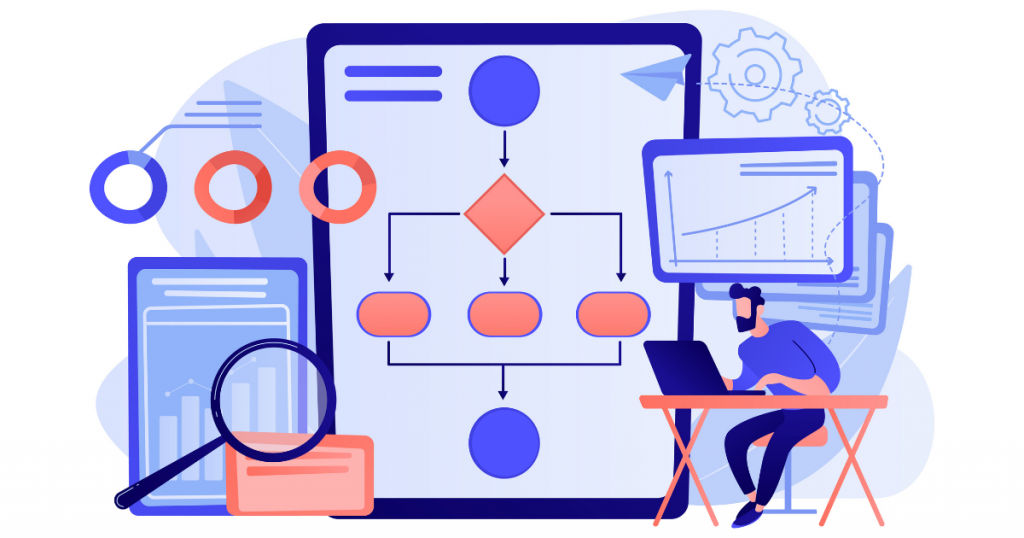
Customer retention focuses on gaining and sustaining significant customer relationships. A study has shown that existing customers are likely to spend 67% more than new ones. It is also observed that customer acquisition costs almost 5 times more than customer retention. So, if a strategic investment is made to promote customer retention, it can provide a considerable return in terms of business expansion and sustainability.
Let’s discuss the top 10 business strategies which will ensure that your customers come back for repeat business.
Table of Contents
1. Prioritize customer experience
Customer experience defines how a consumer perceives your brand. A service offered by any company should be designed in such a way that it is useful and enjoyable for the customer. According to a report, 60% of the customers are likely to recommend the brand they are loyal to. So, keeping your customers happy is likely to increase the reach of your business by word of mouth.
Since the year 2020, online businesses have shown exceptional growth. The customer experience at this point is no longer an option but a necessity to grow the business. Software like SAP customer experience and Qualtrics Customer Experience can help build a customer experience management platform. This also helps to understand the customers better and create hyper-personalized experiences.
2. Build a community

Building a community is vital for constructing a business online. Consumers are likely to return for purchase when they become a part of the brand’s community building. Investments made in a community reciprocates with equal returns in terms of customer loyalty. According to a report, 25% of the organizations have switched to a branded community. This has improved customer engagement up to 21%.
The brand community provides a virtual space where people can share experiences and find answers. This creates a free flow of information that can often yield new ideas for expansion. Vanilla Online community is one of the top-rated software for building an online community. It offers flexible customization to fit the brand’s needs and help create the best user experience.
3. Effective customer support
If a customer is unhappy with the response received from customer service, they may not only discontinue the service but are also likely to forge a complaint and provide negative feedback in the community. This may cause the brand to lose many potential customers. A study shows that 93% of the consumers are more likely to engage in repeat business with brands that offer good customer service. This shows that efficient customer support is crucial for a good customer experience because it can accelerate the brand’s popularity and growth.
Options in software are available that offer a reliable platform for managing customer support. Help scout provides all-in-one customer service. It creates a shared space for all customer queries. It also allows brands to post relevant articles that can help the customer to resolve the issue on their own. Live chat is another way to enable real-time response to queries. Software like Intercom can be used for this purpose.

4. Promote regular feedback
In any business, gaining a new customer drives the business’s survival whereas sustained relationships with the existing customers help the business to thrive. Promoting regular customer feedback is a way to keep the customers abreast. These initiatives make them feel involved and valued.
The best way to get customer feedback is by conducting surveys. According to a study, the attention span of an average human is just 8 seconds. So, a customer can get distracted if the survey is too long; resulting in unreliable results. Software like SurveyMonkey can help curate questionnaires and survey templates for the best result.
In addition to the services, customer feedback should also be practiced after an issue is resolved. These small steps are highly recommended to create a significant impact in the long run. Autopilot can be used to send out such automated requests for customer feedback.
Regular customer feedback can accumulate ample and relevant data that can predict customer behavior. Observed patterns in a customer’s behavior can be used to plan a strategy for a better approach to yield positive results. Customer feedback is beneficial for short-term as well as long-term growth.
5. Maintain consistent reach
It is important to establish consistent interaction with customers to make the brand noticeable. A calendar can be maintained to send out emails to customers with relevant up-sell and cross-sell opportunities. For example, by using Encharge, brands can send emails to clients based on their browsing habits.
Sending out a company newsletter regularly is another way to serve the purpose. Newsletters keep the customers in the loop of the latest updates on services and products offered. Relike.email tool is a way to design and schedule the dispatch of newsletters. It can also generate custom templates based on the brand requirement.
6. Process automation

Several tasks are repeated in every organization on daily basis. Automation of these tasks can save a lot of time and also increase the visibility of the brand in front of the customer. In addition to individual tasks, it is also possible to automate the complete workflow. This has brought a revolutionary change in managing an enterprise by decreasing the manual error in addition to the response time, in case of any issues. For example, SaaS automation tools can benefit businesses in keeping pace with the ever-changing marketing trends. However, before establishing automated operations, it is crucial to first standardize the process that will yield the best results. The processes should also be regularly revised to remain relevant over time.
7. Create interactive content
Interactive content has vast scope in building the brand-customer relationship. Such content may include creating an appealing interface on relevant social media platforms, announcing promotional offers and giveaways to increase online activity, and conduct contests to reward customers who show maximum engagement. Outgrow can be used to create interactive content with quizzes, polls, chatbots, and surveys that can attract audience attention.
A business can also be made interactive by building user-friendly websites. Websites that are mobile-optimized show better engagement. According to a report, 53% of the users abandon a website if it takes more than 3 secs to load. Hence, it is important to optimize load-time for mobile websites. A brand should also invest in creating a user-friendly mobile app for easy access and instant purchase.
8. Build trust
Gaining a new customer sure adds value to the business but having the same customer come back for the service benefits the organization in the long term. This can be achieved by building a foundation of trust in the customer-brand relationships.
Trust is the hardest to earn from a customer. It is built with years of service that go above and beyond their expectations. Key points to ensure the trust of the customer in a brand are:
- Thorough knowledge of the product or service helps in better understanding of customer queries and hence the solution to it.
- A confident approach and a polite tone go a long way. This helps the customer to feel safe and valued at the same time; increasing the chances of them coming back.
- Always provide options for the customer to choose from. This gives the customer a sense of authority and also prompts the trust in brand value.
Reputation management software can help businesses in building a market value for themselves.

9. Create customer retention metrics
Companies should regularly analyze the services that generate maximum revenue. This will give direction to future marketing strategies to attract more customers. Customer retention metrics can provide valuable insights into the brand’s performance and the reasons that made customers churn in the past.
SheetChart can help brands track and manage business metrics. It reflects the company’s performance in the past years to identify important key performance indicators (KPIs). Users can also monitor churn values and impact on market and customer activities. This helps to forecast strategies by identifying the issues as well as opportunities in customer retention.
10. Promote CRM strategy
Customer relationship management (CRM) represents a business strategy that focuses on increasing revenues and customer loyalty. It has been found in a study that up to 60% of profit can be generated with customer-centric strategies.
CRM software can customize customer-facing strategies to convert leads into sales. There are several open-source CRM software available for free. Other CRM software like Salesforce can also be used. It provides an additional advantage of an AI-equipped chatbot (Einstein) and an integrated community to boost business growth and scalability.
Conclusion
Having a great product cannot solely drive customer retention. Even if new customers are gained, they are not likely to stay without regular engagement. For customer retention, it is essential to keep current customers involved and satisfied.
If you are looking for software best suited to your business then SaaSworthy can help. We track over 40,000 software in more than 300 categories and share detailed product information, unbiased reviews, and software recommendations. To know more, you can visit SaaSworthy.com






